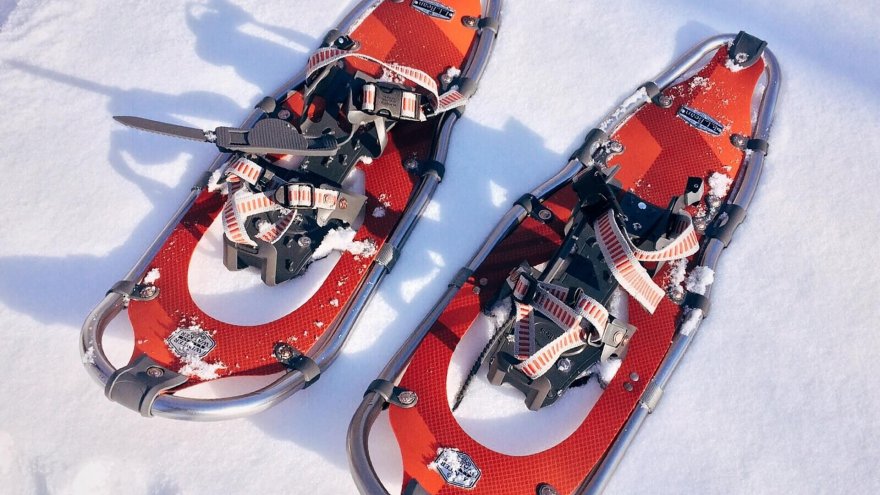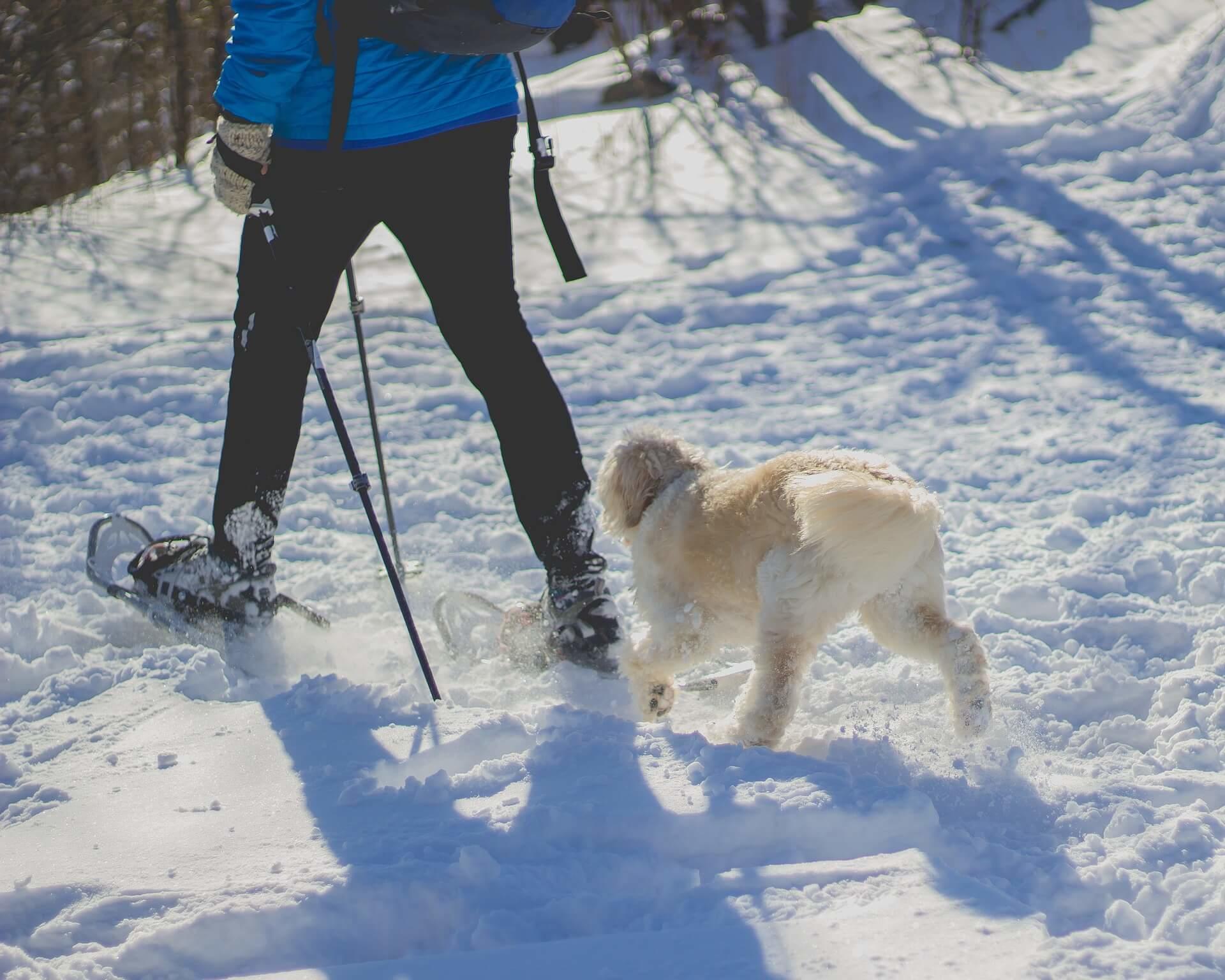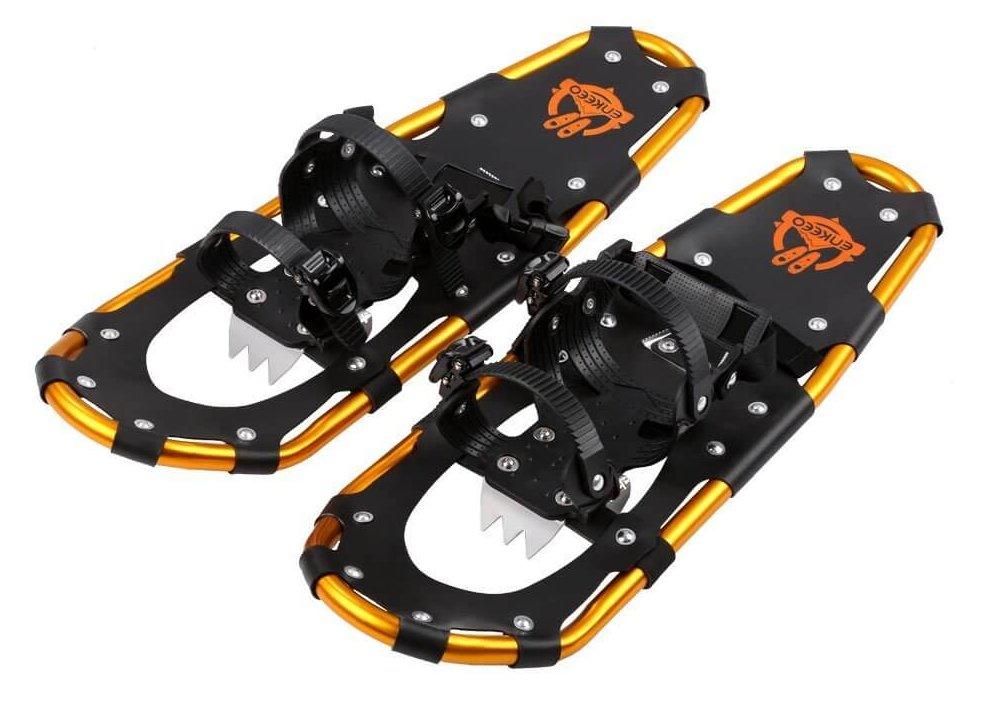Cross-Training for Runners: Snowshoeing

Runners, who generally prefer to practice their craft outdoors, face some pretty interesting challenges. Many of which are presented by seasonal changes in the weather – with winter being a powerful obstacle to be overcome. In reality, though, the cold and snow of winter could be exciting development for the creative runners out there.
With some planning, winter weather could afford you a great opportunity to participate in some highly useful cross-training. Granted, this will require you to learn a new training tool: the snowshoe. How can snowshoes help runners? What do you have to know before heading out?
The Differences And Benefits
As mentioned, learning to snowshoe can offer up a whole new world of cross-training potential for runners during the winter months. Like other forms of cross-training, this means that you’ll be able to stay active while developing slightly different aspects of your fitness.
In fact, the technique involved in snowshoeing is so similar to standard running and walking that there’s a pretty direct benefit to your usual training routine. So, what’s the difference?

Primarily, you will need to widen your stance slight and lift your knees a little higher with each step to make room for the big old shoes strapped to your feet. This can take some getting used to, of course. More on that later, though.
Since snowshoeing is so very similar to running, then, the main benefit is pretty clear. It allows you to run in the snow. Typically, runners would want to avoid certain areas and environments during the winter. Not so with snowshoes. Because of their unique and time-tested design, these specialized pieces of footwear allow you to continue running regardless of the weather. Which is a big deal.
Getting Started
As mentioned, however, snowshoeing is a simple as just buying a pair of shoes and heading out as you would on any other run. First, you’ll need to make sure that you pick the right pair of shoes. Generally, snowshoes can be categorized as either recreational, fitness or backpacking.
As the very descriptive name suggests, recreational snowshoes are basic models intended for beginners who won’t be pushing things too hard. These types of snowshoes typically aren’t designed to handle particularly different terrain.

You probably locked onto the “fitness” category. And for good reason. These light weight, sleek snowshoes are intended for runners and can put up with some greater challenges than the recreational models.
Finally, the backpacking group. Built with a heavier frame and overall more durable materials, these snowshoes are meant for long treks on difficult trails.
Now, it’s important to realize that snowshoes aren’t the only form of footwear that you’ll need if you decide to take your runs out in the snow. While other snowshoe styles lend themselves to heavy hiking or snowboarding boots, that won’t really work for you. Instead, you’ll need a good pair of waterproof trail shoes that will provide adequate ankle support while also keeping you dry.
As an added layer of warmth and protection, wear socks that are either wool or a blend of wool and silk. Avoid materials like cotton that tend to absorb moisture. This would be a very bad thing in the snow.
Other Gear
Of course, it’s not just about what’s on your feet. In general, the snowshoeing wardrobe will be very similar to what you would generally wear when running outdoors during the winter. The one significant difference would be a greater emphasis of waterproof materials.
Your outer-layer – like your pants and jacket – should be able to keep all of that moisture out. Because you will be getting wet. For your inner layers, which are more about warmth, stick with materials like wool, polyester fleece and other synthetics that will retain your body head even when they get wet. Again, stay away from cotton.

A hat, gloves, a scarf and goggles are also recommended. Keep in mind, unlike simply running when it’s snowy out, snowshoeing is going to expose you to a lot of snow. So bundle up and stay covered.
When planning your wardrobe, though, it’s also useful to think in terms of layers. Since you are working out your body temperature will rise and you may even be able to keep snowshoeing into the spring, when temperatures start to warm up a little. Make sure that you can quickly and easily remove some layers of clothing if need be.
Pick (Or Make) Your Path
Even the most adventurous winter runners generally stick to a path that’s been cleared of snow. If you have your snowshoes on, though, you don’t have those restrictions.
When you’re first starting out and getting used to running in snowshoes, it’s smart to stay on packed snow. Since snowshoes will give you the needed traction, these firm trails are a perfect way to work on your technique.
Of course, as you get more comfortable, you can gradually start going off-trail and jumping into deeper or fresher snow. And this scenic, adventurous training is probably one of that things that makes snowshoeing such a great tool for runners. Not only can you keep up your routine but you can explore a whole new landscape that you normal wouldn’t be able to see.
Latest Articles
 Is Running on a Treadmill Easier Than Running Outside?Runners have their own preferences, whether it is treadmill running, running outside on the road, or exploring trails. So...
Is Running on a Treadmill Easier Than Running Outside?Runners have their own preferences, whether it is treadmill running, running outside on the road, or exploring trails. So... Is It OK to Use Trail Running Shoes on the Road?While trail running shoes can be used on roads, especially in situations where a runner encounters mixed terrains or pref...
Is It OK to Use Trail Running Shoes on the Road?While trail running shoes can be used on roads, especially in situations where a runner encounters mixed terrains or pref... How to Fix Sore Quads After Running?Rest, ice, gentle stretching, and over-the-counter pain relievers can help soothe sore quads after running. Also, ensure ...
How to Fix Sore Quads After Running?Rest, ice, gentle stretching, and over-the-counter pain relievers can help soothe sore quads after running. Also, ensure ... 10 Fruits With The Most Electrolytes to Replace Sports DrinksThese fruits are high in electrolytes such as potassium, magnesium, and calcium, essential for hydration, muscle function...
10 Fruits With The Most Electrolytes to Replace Sports DrinksThese fruits are high in electrolytes such as potassium, magnesium, and calcium, essential for hydration, muscle function...

